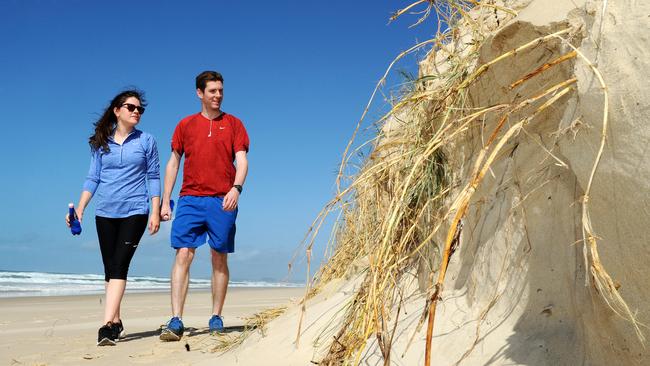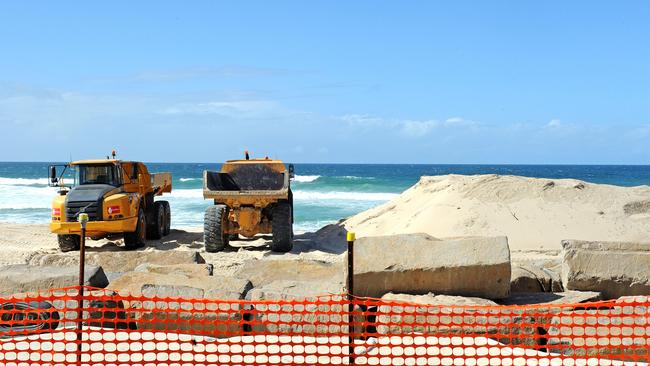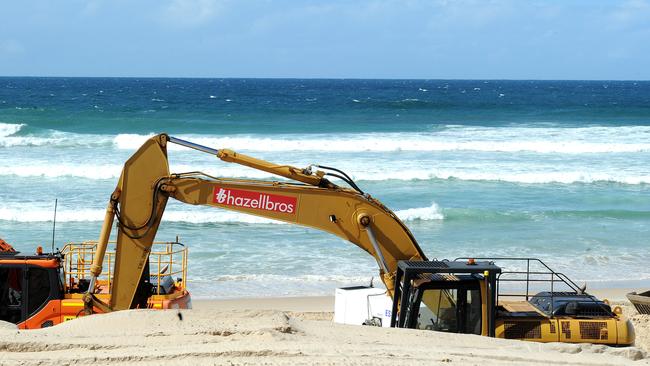Gold Coast at threat of severe erosion and property damage, research shows
THE rivers of golden sand that flow on to Gold Coast beaches are expected to slow, causing erosion, property damage and terrible surf, research shows.

Beaches & Fishing
Don't miss out on the headlines from Beaches & Fishing. Followed categories will be added to My News.
THE rivers of golden sand that flow on to Gold Coast beaches are expected to slow, causing erosion, property damage and terrible surf, research shows.
More than 500,000 cubic metres of sand pushed over the Queensland border and on to the city’s trademark beaches by southerly swells will drop by 30 per cent in coming decades, according to Associate Professor Ian Goodwin.
The findings are being closely monitored by authorities including Gold Coast City Council and the NSW and Queensland governments.

In the wake of the research, the council, which has set aside $32 million for beach protection this year, said it was watching wave and storm data while planning for changes in weather patterns.
Prof Goodwin’s study, published in the Journal of Geophysical Research: Oceans, found sand flow would slow because the Coast was going to cop more storms like the east coast low which pounded beaches and property this year.
The Macquarie University researcher said it was bad news for multimillion-dollar property owners, the council, the tourism industry and surfers because sand would not be replenished from down south.
“There will be less energy transporting sand from south to north,” Prof Goodwin told the Bulletin.

The Gold Coast has one of the most heavily modified coastlines in Australia, using sand pumping, but Prof Goodwin says will still be an issue.
“It doesn’t matter how good the pumps are, you have to have the sand to pump in the first place,” he said.
“It’s a big deal, it’s already happening at lots of places along the (NSW) north coast.
“Other research has showed that at Scotts Head, the Nambucca Coast and Yamba, for example, (the sand transport) has already slowed.”
The council is doing it’s own research and has big ticket projects in the pipeline to protect beaches, including the Palm Beach Shoreline Project, the Northern Beaches Shoreline Project, and renewal of the Narrow Neck artificial reef.

“Overall trends in wave direction and storm frequency can be seen from one decade to the next,” a spokeswoman said.
“During each decade, specific beach management responses were implemented in response to these conditions.
“City officers, researchers at the Griffith Centre for Coastal Management and respective Queensland and NSW State government agencies are aware of new and emerging research that relates to this particular topic.”
Griffith Centre for Coastal Management director professor Rodger Tomlinson said the study was useful but should not be linked to current Gold Coast beach management.
He said the changes would have more of an impact on NSW beaches.
“You can’t take that projection to coastal management. It is a nice analysis of the effects of climate change into the future,” Prof Tomlinson said after reading the study.
“The shifts (according to the research) would be more significant for Newcastle and near Coffs Harbour.”
